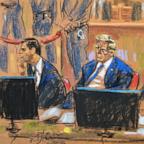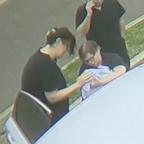Case of S.C. Woman's Death Reopened
"20/20" puts Jimmy Motz's story to the test in forensic gunshot experiment.
March 17, 2010— -- For nine years, the family of Melissa Huntley Motz has clung to the belief that its beloved 35-year-old daughter did not commit suicide after Valentine's Day 2001.
"Our daughter did not kill herself. I know that," said Patsy Huntley, Melissa's mother. "There's not one doubt, not one, in my mind."
On Feb. 15, 2001, Melissa's husband of two months, Jimmy Motz, told police he watched from outside the car as his wife shot herself while she was seated in the passenger seat, outside their Rock Hill, S.C., apartment building.
"Mr. Motz indicates he hears a gunshot in the vehicle ... and actually sees smoke coming from the gun," said Charles Cabaniss, who was in charge of the Rock Hill Police Department's homicide unit at the time. "There were several things in Mr. Motz's story that I found hard to believe."
Given the suspicions of police, the Huntleys were shocked when the local prosecutor at the time, Tommy Pope, told them he was not going to prosecute Motz, believing there was insufficient evidence for a conviction.
Melissa Motz's parents, Patsy and Larry Huntley, have searched for someone who would listen. Now the new York County coroner, Sabrina Gast, has decided to reopen the case.
"When I reviewed the case, there were a lot of questions that I had ... and I just felt like it was something that ... Melissa deserved for us to actually look at it again," Gast said. "If we are able to come to a conclusion for this case, Melissa ... can actually rest in peace."
Gast has ordered an inquest -- a rare courtlike proceeding where witnesses are sworn to tell the truth and subpoenaed to help answer the question: How did Melissa Motz die? Was it suicide, undetermined -- as her death certificate now reads -- or homicide, which might put pressure on the current prosecutor to take Jimmy Motz to court.
Gast's predecessor, former coroner Doug McKown, who initially declared Melissa's death a suicide, agreed that the case should be reopened.
"It needs to be reviewed," McKown said. "It's not too late for an inquest. It's not too late for a grand jury. You know, knowing what I know now, I mean the worst thing that could happen out of this is that justice is served."
Mike Haag prepares for the gunshot test.
"20/20" decided to put a significant element of Jimmy Motz's story to the test, hiring forensic firearms analyst Mike Haag to re-create the scene of Feb. 16, 2001. Haag couldn't fire a gun in a Rock Hill, S.C., apartment complex in the middle of the night, so we came to the Tonto National Forest, outside Scottsdale, Ariz.
"20/20" found the make, model and year Ford Thunderbird that Jimmy and Melissa Motz rode in the night of her death.
Haag bought the exact gun -- a .32 H&R magnum revolver -- and loaded it with the exact type of ammunition she used to supposedly commit suicide. He prepared blocks of gelatin and animal skin to simulate human tissue.
"It's the correct density and elasticity, and many different properties, to simulate as best we can how deep bullets should go in typical tissue," Haag said.
The tissue stimulant was duct-taped to the head rest, approximately where Melissa's head would have been inside the vehicle. A piece of a Kevlar bullet-resistant vest was placed behind the back of the block to catch the bullet in case it completely penetrated the tissue, Haag said.
Haag measured off the exact distance witness Chris Campbell says he was standing from Melissa Motz in the parking lot that night and set up a sensitive sound meter, 46 feet away.
With the same car, the same gun and similar circumstances, Haag said the experiment is "as close as we're ever going to know" if the gunshot would have been audible.
If there was no sound from a gun fired inside this car, it would add credibility to Jimmy Motz's story that Melissa shot herself. If the shot was audible, it would raise even more questions about where Melissa was shot, and by whom.




